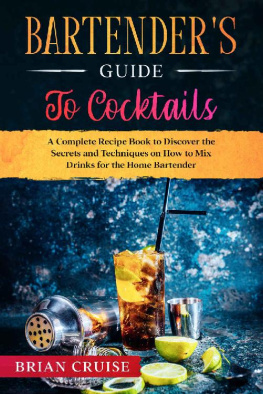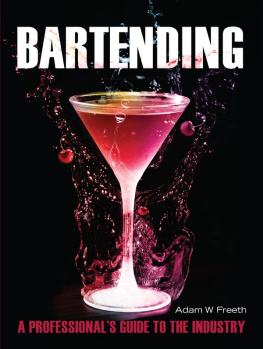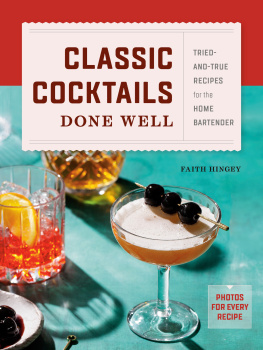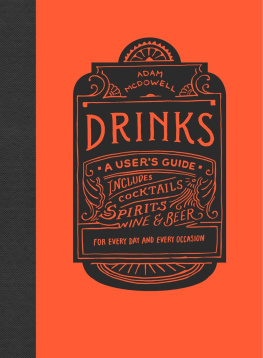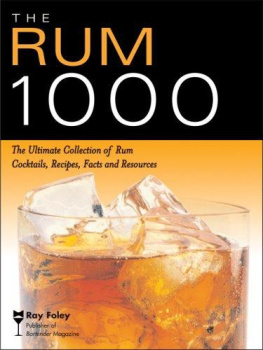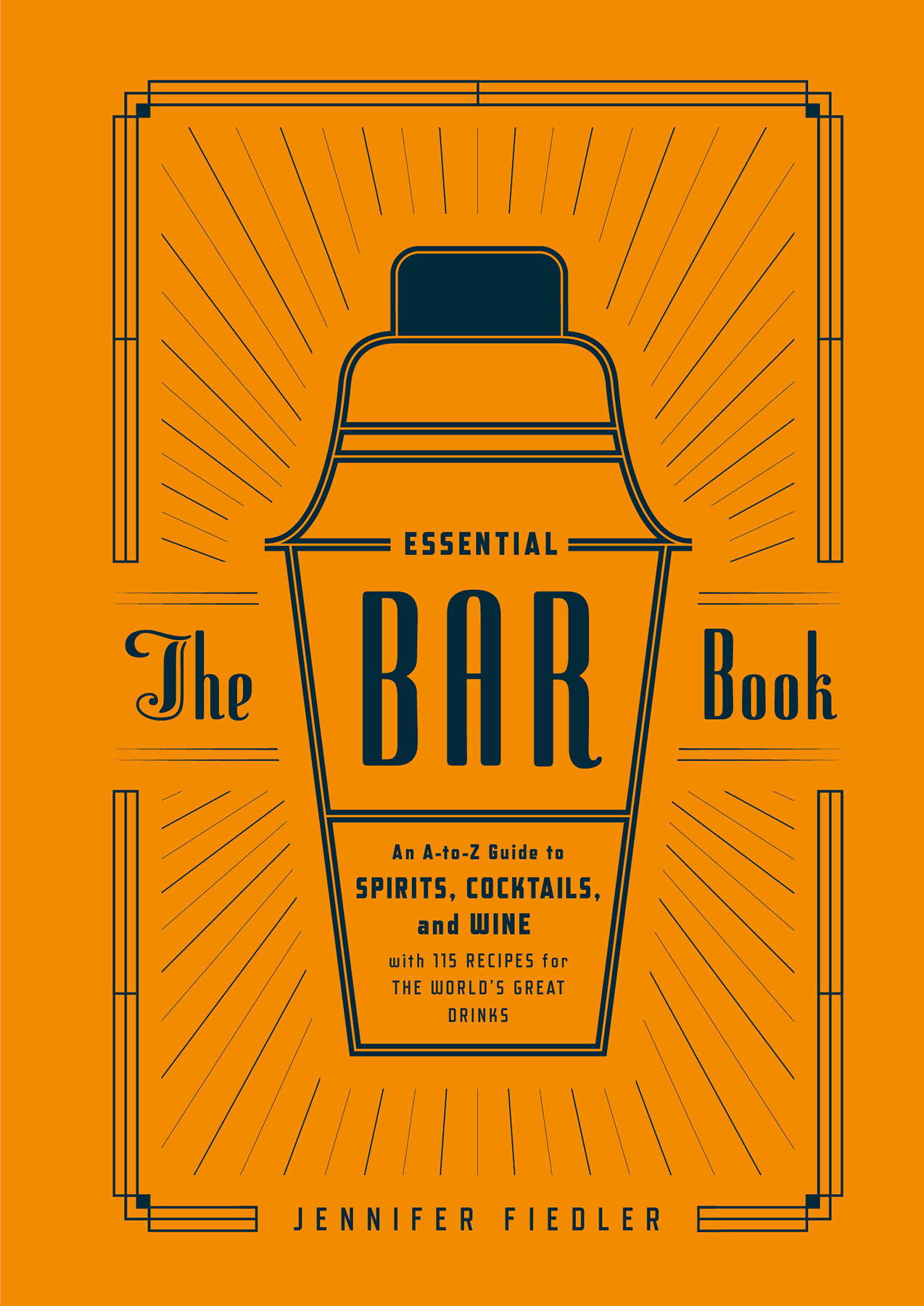


How to Use This EBook
T hat cocktail renaissance has unleashed a tide of products on the market, both new and revived, is a good thing for discerning drinkers. But the ever-expanding mass of terms, classifications and specialized processes can be dizzying to even the most experienced among us.
This book is designed to help make sense of todays liquor shelves and bar menus, defining everything that savvy imbibers should need to know now. With an emphasis on the historical origins of ingredients, the definitions provided here in an A-to-Z format tackle everything from alcohol types to specialized liqueurs, equipment to instructions. Curious about that bottle of Old Tom Gin you found at your local market? Find the definition under O, then learn about how it compares to London dry gin by reading the Gin entry.
Also included are recipes for 115 essential cocktails, the blocks on which contemporary bar programs are built. Whether youre looking to order confidently at the bar or build out your liquor shelf at home, the terms and recipes provided here should give you everything you need to fluently speak bartender.
Contents
Cocktail Recipes
ABSINTHE
(n.) This boldly flavored spirit is flavored with a distinct mix of herbs and botanicals, most often anise, fennel, and wormwood. It is thought to have been created in France or Switzerland as a medicinal elixir and was first commercially produced in 1797 by what would become the Pernod company.
Most often associated with a bright-green color, absinthe is actually made in a variety of shades. Green absinthes are typically French, resulting from an extra maceration that draws chlorophyll from hyssop or other herbs, while Swiss versions are typically white and have less alcohol (note that white absinthes are generally clear in color). American absinthes, sometimes made with mint and verbena, tend toward a more natural brown-green color because distillers typically forgo stabilizers that preserve the hue.
With its distinctive flavor, absinthe became a signature component in certain classic cocktails such as the Sazerac and the Death in the Afternoon. It developed a larger-than-life reputation in the late nineteenth century for its supposed hallucinogenic properties, which would later be debunked as bad reactions to its super-high alcohol content. Perhaps because of its association with illicitness, absinthe (nicknamed the green fairy for the vivid color of the French version) was adopted by the Parisian bohemian set in the 1800s, and it became so popular in the mid-nineteenth century that happy hour became known as lheure verte (the green hour). Nevertheless, a long ban in France, the United States, and other countries helped fuel its mystique and gave rise to the absinthe substitutes, which include pastis (France) and Herbsaint (New Orleans).
In 2007, absinthe became legal again in the United States, although it is subject to new regulations, the most important of which is a limit on the presence of thujone, the wormwood extract with the supposed hallucinogenic properties. Ritual vestiges from the nineteenth century still haunt the spirit, such as serving it with water dripping over a sugar cube into the glass, which was perhaps necessary with the crudely made absinthes of the past but isnt now that the quality has improved. If not serving it in a cocktail, though, do consider diluting it with water, as most contain well over 60 percent ABV. Brands to seek out include Vieux Pontarlier, St. George Absinthe Verte, Kbler, and Pernod.
A
ABSINTHE FRAPP
A T the first cold sip on your fevered lip, you determine to live through the day. So went the ode Absinthe Frapp from the 1904 musical It Happened in Nordland. This drink hails from a time when absinthe was a highly popular apritif (before its ban in 1912) and considered a morning pick-me-up. Simple, icy, and strong, the frapp is a less fussy alternative to the pomp and circumstance of traditional absinthe service.
Serves 1
Glassware: absinthe or rocks
1 ounce absinthe
ounce simple syrup (1:1, sugar:water)
2 dashes anisette (optional)
12 ounces chilled water
Add all ingredients to a cocktail shaker. Add ice and shake until chilled. Pour into an absinthe or rocks glass over crushed or pebble ice. Top with additional ice.
ABSINTHE FOUNTAIN
(n.) This theatrical accessory used to dispense ice-cold water can be used in the preparation of absinthe cocktails, though it is not necessary.
ABSINTHE SPOON
(n.) Used in the ritual of preparing absinthe, this perforated spoon sits atop a glass of absinthe to hold a sugar cube. When ice-cold water is poured over the cube, it dissolves into the glass.
ABV
(n.) An abbreviation for alcohol by volume. In the United States, producers are required to list the ABV of a product on the front label, expressed as a percentage.
ACHOLADO
(n.) A Peruvian pisco made from several varieties of grape, as opposed to the puro style, which is made from a single variety.
A
ADONIS
A LIGHTER take on the Manhattan made with fino sherry instead of whiskey, this stylish cocktail was swept into the canon in the late 1800s on a wave of sherry fandom. Cocktail genealogists will note that save for using sweet vermouth instead of dry, the Adonis is nearly a perfect mirror image of the Bamboo, another sherry-based cocktail from the same era. As such, the pair make excellent foils for comparing and contrasting different styles of both sherry and vermouth. The drink takes its name from a Broadway musical that debuted in 1884 to great popular acclaim.
Serves 1
Garnish: orange peel
Glassware: cocktail or coupe
2 ounces fino sherry
1 ounce sweet vermouth
2 dashes orange bitters
Add all ingredients to a mixing glass. Add ice and stir until chilled. Strain into a chilled cocktail or coupe glass. Garnish with an orange peel.
Note: On the fino front, Lustaus La Ina has a stronger, more pungent acetaldehyde note than most finos and tends to hold its own against more brooding flavors. On the vermouth side, the savory complexity of Carpano Antica is a good choice. For a fruitier riff on the drink, try Dolin or Martini & Rossi.
ADVOCAAT
(n.) A Dutch liqueur made from brandy, sugar, and eggs. This shelf-stable eggnog-like product is typically thick like pudding, custard yellow, and under 20 percent ABV. Traditionally consumed as a chilled digestif with whipped cream (and eaten with a spoon), advocaat also is frequently used in making desserts such as ice cream or custards. It also makes an appearance in cocktails such as the Snowball. Though commercial versions can be hard to find, it is simple to make at home.
AGAVE
(n.) A cactus-like perennial plant native to the American Southwest and Mexico that yields a starchy heart (the pia ) used to make tequila and agave nectar.
AGAVE NECTAR


